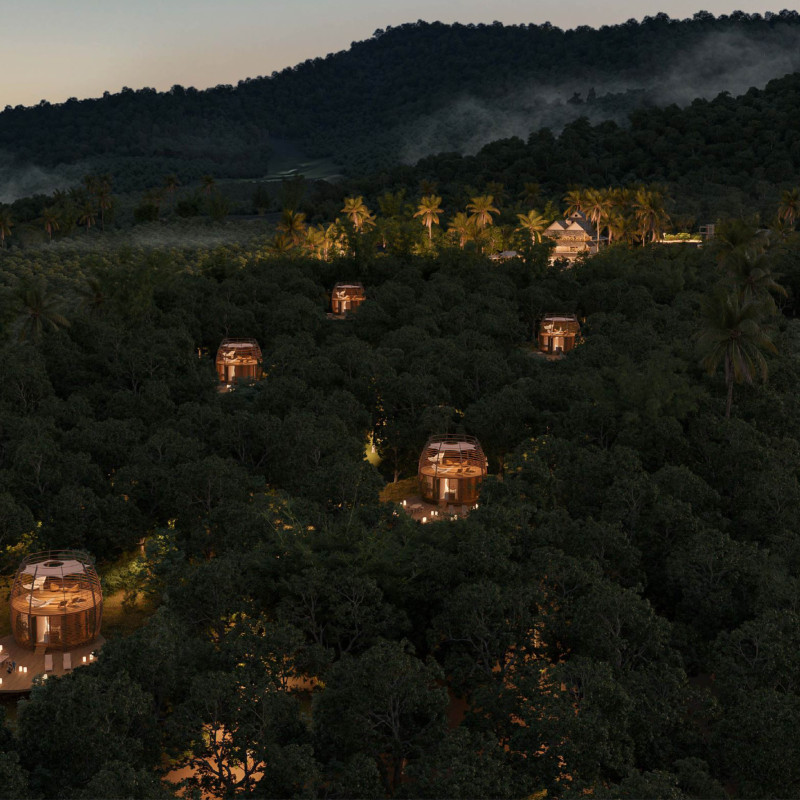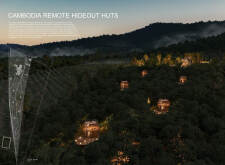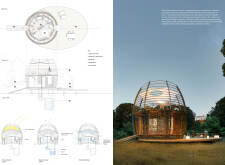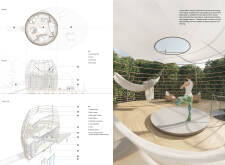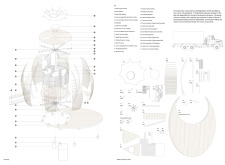5 key facts about this project
The Remote Hideout Huts are located in Cambodia and are designed to provide private accommodations for extended stays. These huts focus on offering comfort and seclusion while blending into the natural surroundings. The design emphasizes sustainability and the connection between indoor living spaces and the great outdoors.
Design Concept
-
The design aims to create intimate environments where guests can feel at one with nature. Each hut has a sleeping area, small kitchen, bathroom, and soaking tub, all providing essential functions for long-term stays. The inclusion of screened sliding louver doors allows fresh air to flow through while maintaining views of the landscape. This integration makes it easy to enjoy both indoor comfort and outdoor beauty.
Material and Construction
-
Constructed primarily from cross-laminated timber, the huts achieve structural strength while fitting naturally into their environment. This choice of material aligns with the goals of sustainability, making the design not only functional but also environmentally friendly. By combining off-site pre-fabrication with on-site assembly, builders can ensure quality and efficiency throughout the construction process.
Sustainable Systems
-
The huts incorporate various sustainable features to minimize energy use. Solar fabric canopies collect energy, which is stored in batteries for lights and fans. Rainwater is gathered from the second-floor terrace and directed into storage cisterns after filtration. This water is then used for toilets and to irrigate nearby plants. Such systems highlight the commitment to responsible environmental practices.
Outdoor Integration
-
Elevated terraces serve as spaces for relaxation and yoga, allowing guests to connect with nature from above. Ground-level oval terraces extend the space of each hut, encouraging outdoor activities. These areas offer a chance for users to experience the surrounding landscape while enjoying privacy and comfort.
Timber dowel screens inside the huts allow plants to grow, providing both shade and privacy without closing off the interior space. This thoughtful detail enhances the natural feel of the living areas while maintaining a light and open atmosphere.


